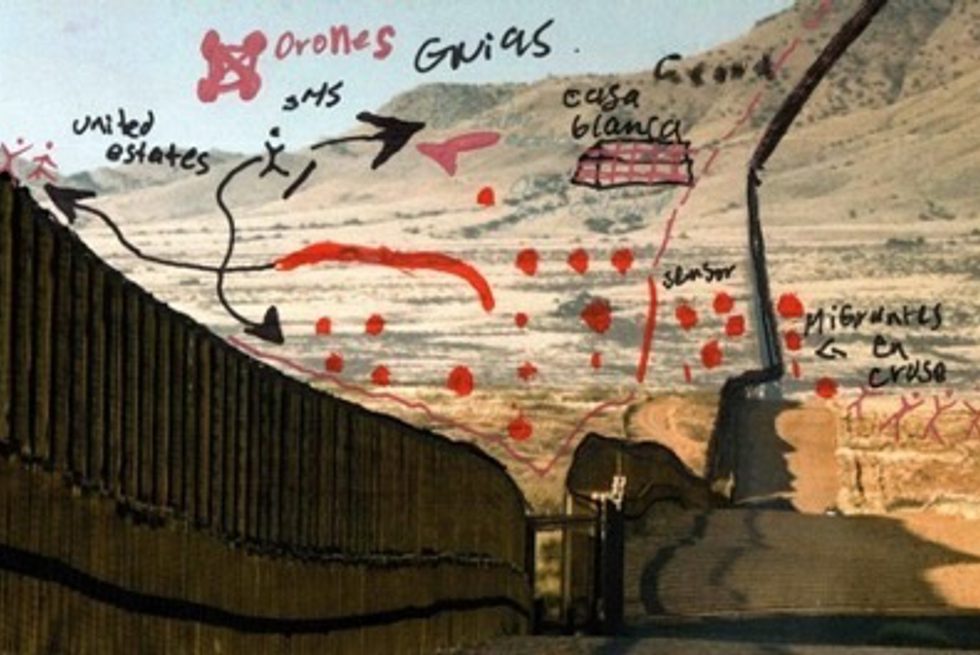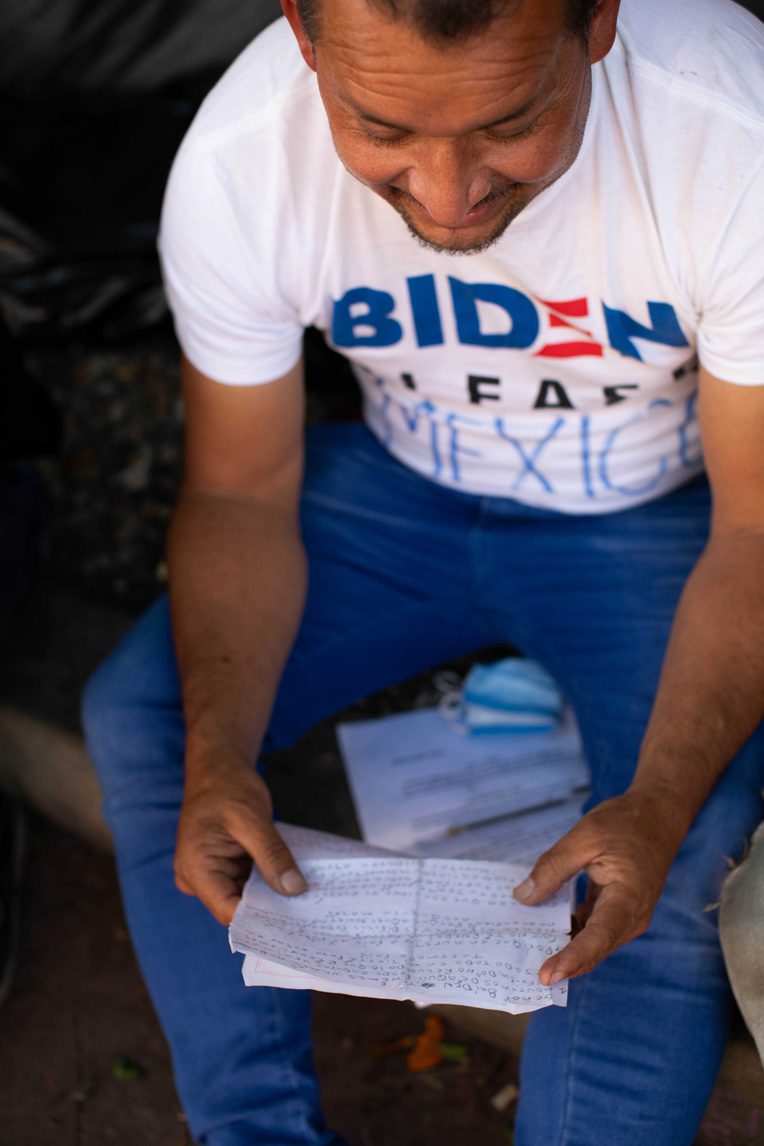Prophylactic Violence: Title 42 and the Re-medicalization of the Southern Border
From the Series: The Damage Wrought: Immigration Before, Under, and After Trump
From the Series: The Damage Wrought: Immigration Before, Under, and After Trump

Upon arriving to a shelter for asylum seekers in Tijuana, Mexico, managed by the International Organization for Migration (IOM) I was directed by Julio, a member of the IOM staff, to a room where some of the asylum seekers recently expelled under Title 42 were staying. Title 42, a policy allowing Customs and Border Protection (CBP) officials to expel migrants attempting to cross into the United States without providing them an opportunity to make an asylum claim, was issued in March 2020 by the Centers for Disease Control in the wake of the COVID-19 pandemic.
Julio was careful about directing me to the rooms without walking too closely to them, since some of the recent arrivals had tested positive for COVID-19. The IOM shelter is located in an old hotel. As I walked along the second-floor hallway overlooking the barren hotel grounds, I wondered whether it was one of the countless casualties of the Tijuana tourist sector, which has struggled for decades amidst post-9/11 border securitization efforts, drug war violence, and, most recently, COVID-19 border restrictions. I had just been vaccinated so felt slightly less apprehensive than Julio. I knocked on one of the doors where I was greeted by Claudia and her son. She was wearing a gray sweater and sweatpants—provided to her by CBP officials after she was detained in Texas while attempting to cross into the United States and had all her personal belongings taken.
Claudia told me that she was from Libertad, El Salvador. I explained that my family was from the Salvadoran province of Santa Ana in a perhaps facile attempt at quickly establishing a personal connection with her, even as I maintained my physical distance. I asked why she left her home, which she spoke about longingly. She explained that she had been physically abused and threatened with murder by her ex-partner, who was affiliated with a local mara (gang). She had scars to prove the abuse that she tried to present to CBP agents as evidence that she had a legitimate case for receiving asylum protection. While many of the people she traveled with were immediately expelled to Mexico, she was taken into custody and told that her case would be processed. She would soon learn that she was being lied to—but only after she was confined in a freezing cold detention center with hundreds of other migrants for four days and boarded onto a plane without knowing where she was being taken. Rather than having her asylum case heard, Claudia was expelled to Mexico.
Claudia and her child are among the thousands of migrants detained by CBP officers in Texas and subsequently expelled to Tijuana in the early months of 2021. When I asked Julio why CBP was transporting people caught in Texas to Tijuana, he replied, “who knows, probably to torture them.” The bewilderment that Claudia experienced was undoubtedly torturous. Strangely, all of this is being done in the name of public health. Title 42 was put into place, ostensibly, to protect CBP agents and the U.S. population from COVID-19. Title 42 proved to be the Trump administration’s most potent weapon for border enforcement and, after several months in office, President Biden has refused to rescind it. As of June 2021, Title 42 has been used over 980,000 times to expel migrants.

Rhetorically, President Trump used the COVID-19 pandemic to further justify his immigration policies by drawing on a deep well of pathologizing discourse. In claiming, for example, that “Tijuana is the most heavily infected place anywhere in the world, as far as the plague is concerned,” Trump rehearsed long-standing tropes that described the border city as a “moral sink hole” and a “constant source of disease and disgrace” (St. John 2011).
In recent years, several anthropologists and historians of medicine have analyzed the ways that immigrants have been construed as a source of contagion and the border as a contamination zone requiring medical sanitation. Early twentieth century enforcement of the southern U.S. border centered on the racialization of immigrant bodies as a medical and social threat. Indeed, the U.S. Public Health Service began conducting intrusive medical screenings of Mexicans nearly a decade prior to the creation of the Border Patrol (Molina 2011).

The medicalization of borders links nationalist sentiments of racial purity and biosecurity with the policing of territory. Jeffrey S. Kahn (2019), for example, has examined how conceptions of pathologized Haitian migrants arriving from a putatively disease-ridden environment became a primary idiom through which many Americans experienced an erosion of their national sovereignty amid the rise of the AIDS epidemic in the 1980s. Similarly, in their exploration of a deadly cholera epidemic in Venezuela that killed several hundred—mostly Indigenous—people in the early 1990s, Charles L. Briggs and Clara Mantini-Briggs (2003) describe how governmental and media discourses portrayed Venezuela as a human body waiting to be invaded by a foreign disease spread by immigrants from surrounding countries.
In the context of COVID-19, we are witnessing a dramatic re-medicalization of the southern border. Callous immigration policies are being construed as necessary prophylaxis. The real threat posed by COVID-19 has appeared to make support for draconian border restrictions widespread among Americans. But medical and political consensus on Title 42 is increasingly showing signs of cracking. For Claudia and other migrants prevented from making an asylum claim, it can’t crack soon enough. Thousands of migrants, most fleeing from unprecedented violence emanating from the global drug trade, have stretched shelters and encampments in Tijuana and other border cities to their limits. Overcrowding, malnutrition, and unattended chronic diseases—not to mention vulnerability to infectious diseases, including COVID-19—are increasingly making their lives unbearable. Despite the uncertainty that has characterized Claudia’s experiences, she is certain about one thing: though she misses her home, returning to El Salvador is out of the question. But she doesn’t consider staying in Tijuana a viable option either. If nothing else, the old barren IOM hotel is providing Claudia with a moment of respite amid her journey to find a new home.

Briggs, Charles L., and Clara Mantini-Briggs. 2003. Stories in the Time of Cholera: Racial Profiling during a Medical Nightmare. Berkeley: University of California Press.
Kahn, Jeffrey S. 2019. Islands of Sovereignty: Haitian Migration and the Borders of Empire. Chicago: University of Chicago Press.
Molina, Natalia. 2011. “Borders, Laborers, and Racialized Medicalization Mexican Immigration and US Public Health Practices in the 20th Century.” American Journal of Public Health 10, no. 6: 1024–31.
St. John, Rachel. 2011. Line in the Sand: A History of the Western U.S.-Mexico Border. Princeton, N.J.: Princeton University Press.